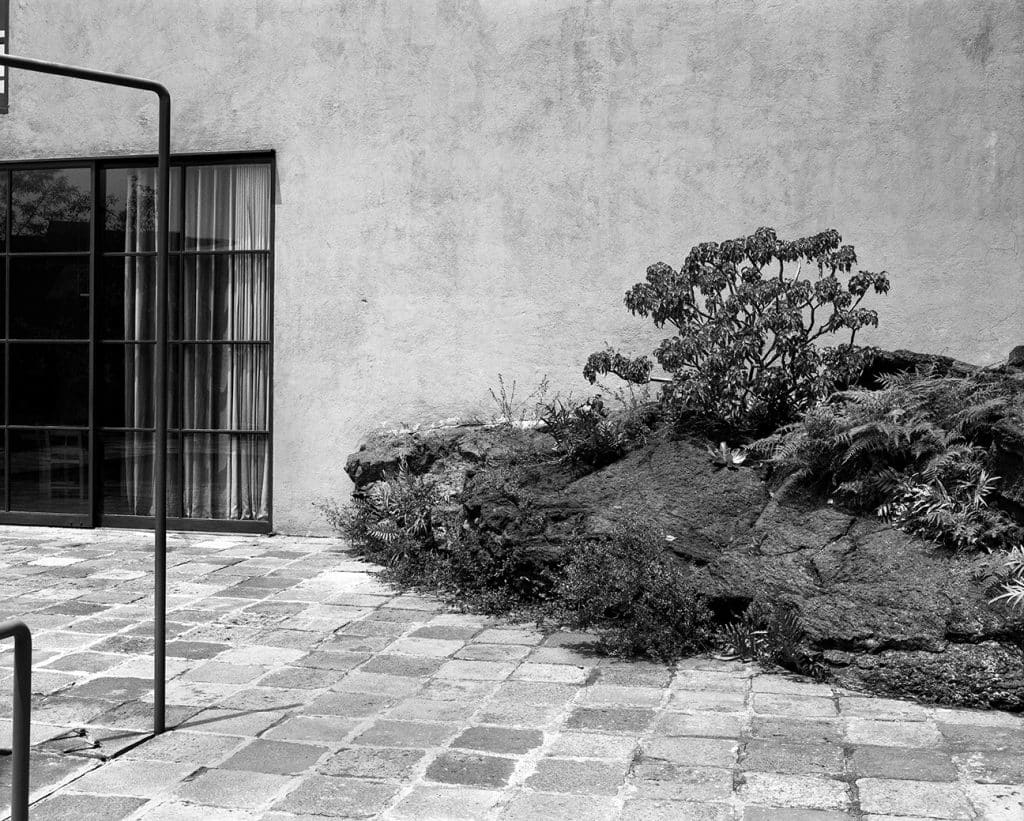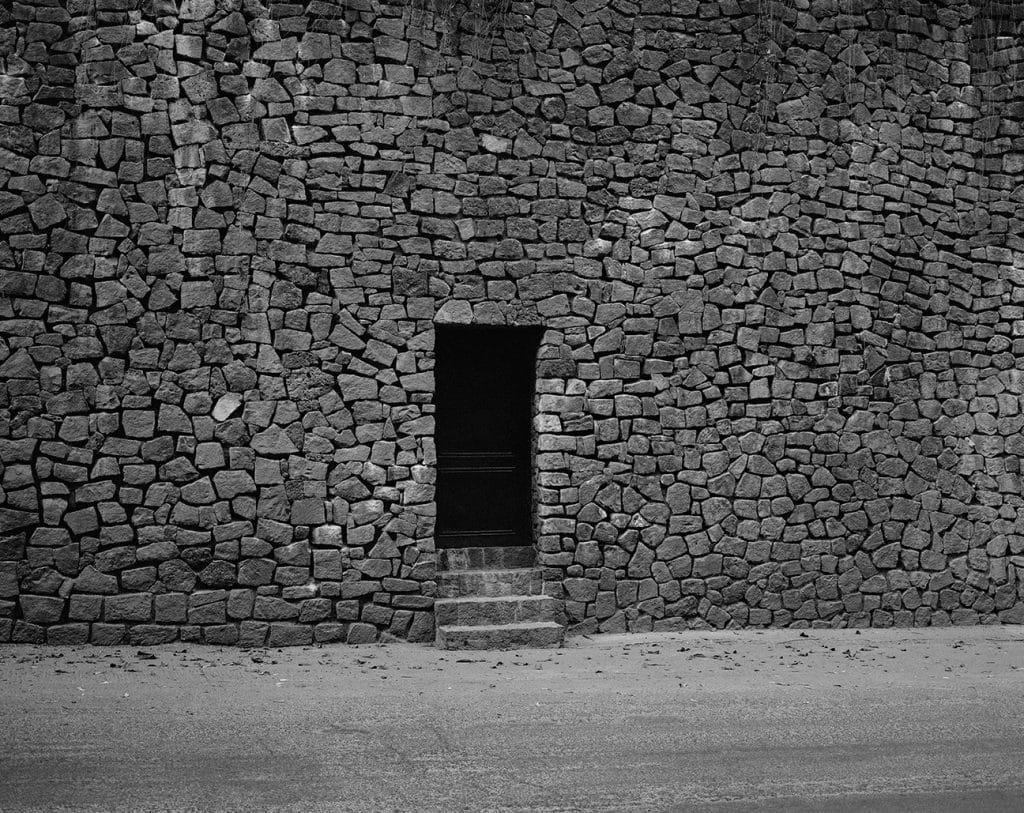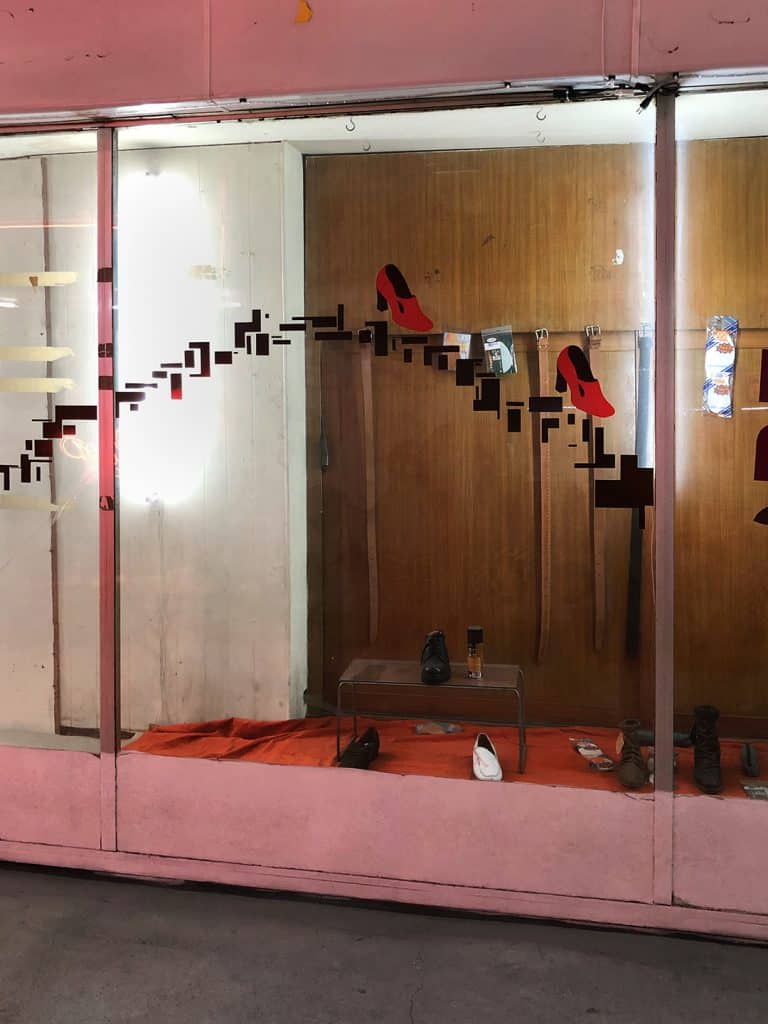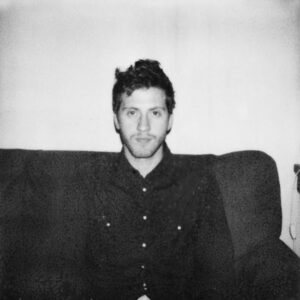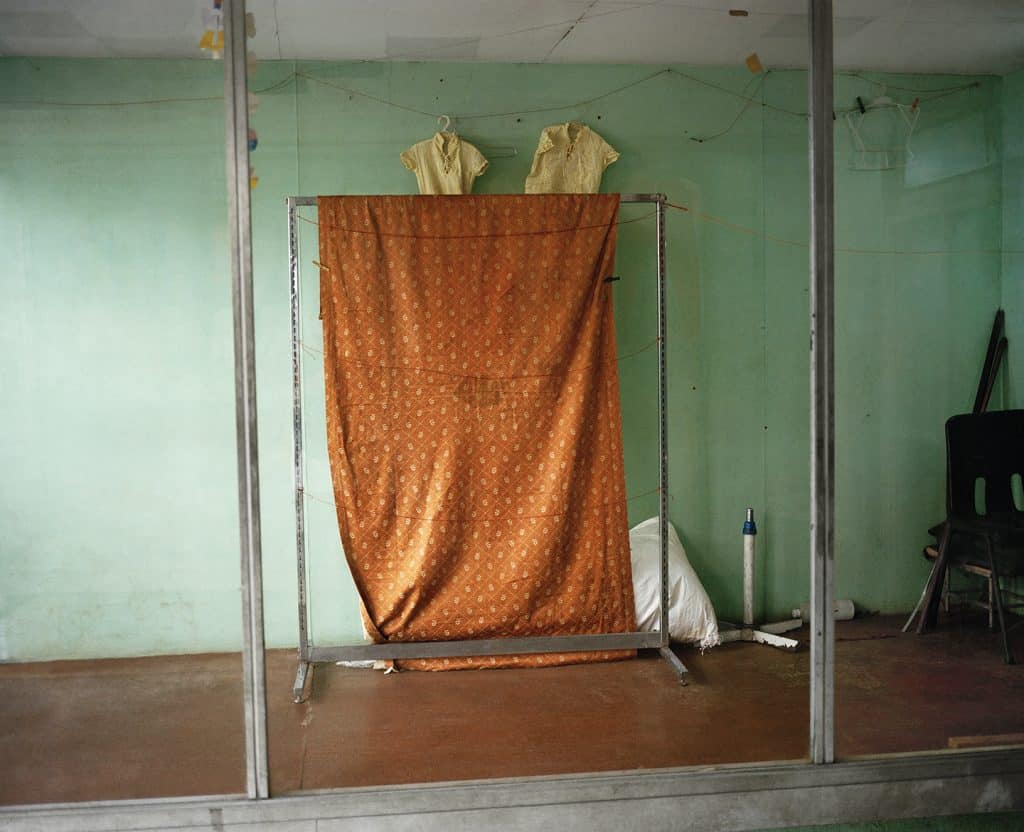
With a sharp eye and a solid array of projects and published books, Pablo has developed a noteworthy body of work. His latest explorations are contained in the recently released book, Baja Moda, published by RM.
Shot over several years in seven cities across Latin America, Baja Moda connects to a narrative about resistance to the mighty economic forces of globalization. Modest, unassuming storefronts stand-alone in streets that will soon be invaded with multinational clothing stores and disposable fashion. The once indispensable shoe store where buying a new pair of shoes crafted by a local cobbler was accompanied by an interaction with the craftsman himself, may soon be forever lost. While the store owners are absent from Pablo’s photographs, the images are irrefutably imbued with their human touch.
Pablo has been photographing since the early 2000s after completing a MA in Visual Arts at NYU. An unshakable eye and a determined search for typology have led him to pursue projects that explore Mexican identity through architecture and urbanism, reflecting the idiosyncrasies of the Latin American landscape. His earlier work explores the role of volcanic rock in the architecture of Mexico City dating back to the pre-hispanic Tenochtitlán and draws on the sub-conscious use of pyramidal shapes in home facades, elements of Aztec architecture in contemporary buildings, and Neo Inca architecture in provincial Peru.
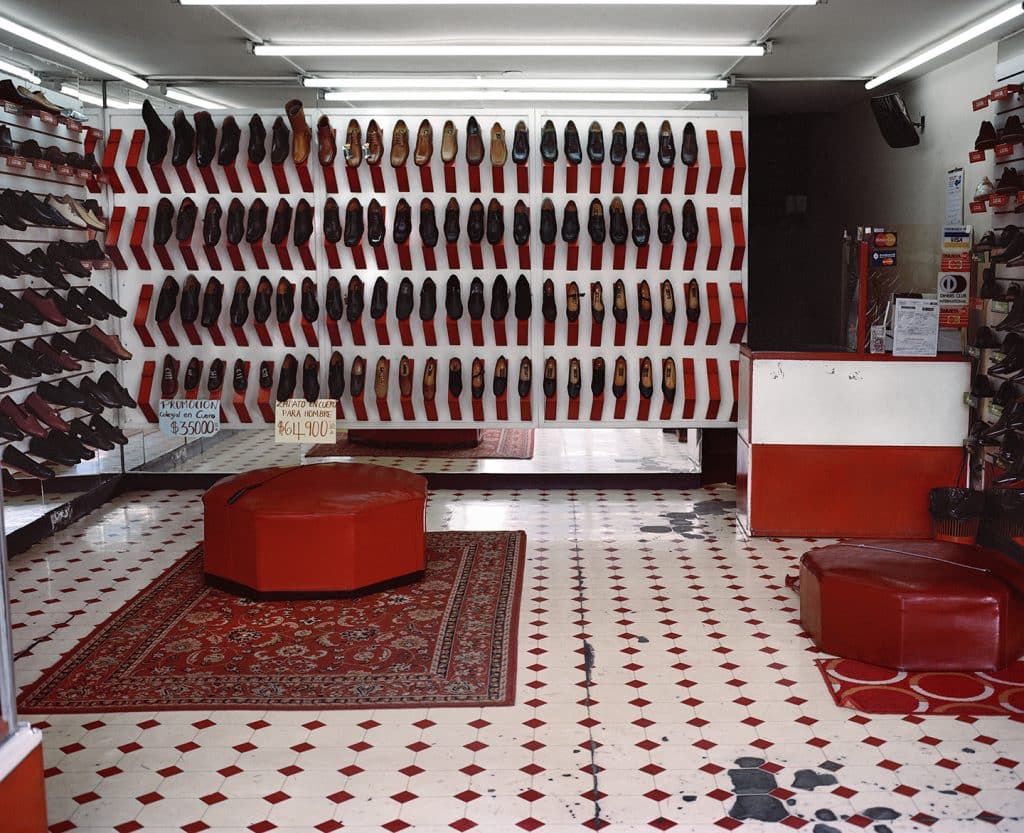
The storefront has been one of photography´s subtle and constant subjects from Steven Shore to William Eggleston and Luigi Ghirri. Baja Moda can be seen as a tribute to those that are still standing; the remains of an identity built on colonialism.
Tell us about your new book Baja Moda. How did the project come about?
The project began back in 2014 when I photographed the first storefront that made it into Baja Moda. I photographed this small clothing store in the town of Parral, Chihuahua, in northern Mexico while working on a different photographic series, but it provided the overall framework for this project.
What were the first steps and considerations for building this series of images?
I quickly realized that the project would take a while to evolve and that it would entail a good amount of traveling, while at the same time It would demand some urgency due to the precariousness of these stores, which have been disappearing at an accelerated rate in a globalized context.
How did you work on editing and sequencing this series and why was that important?
Baja Moda took 7 years to complete, so throughout this time, I was constantly editing the work that came up. I have been playing around with these storefronts for years, adding and subtracting, so in a way, the final selection for the book came as a result of this tedious filtering process. As for the sequencing and final edit, I consulted with Alexis Fabry, with whom I have worked on most of my previous publications. I fully trust his vision and his unique perspective became particularly useful, as someone who has an outsider’s perspective, as someone who is not from Latin America but possesses immense knowledge and sensibility on the region.
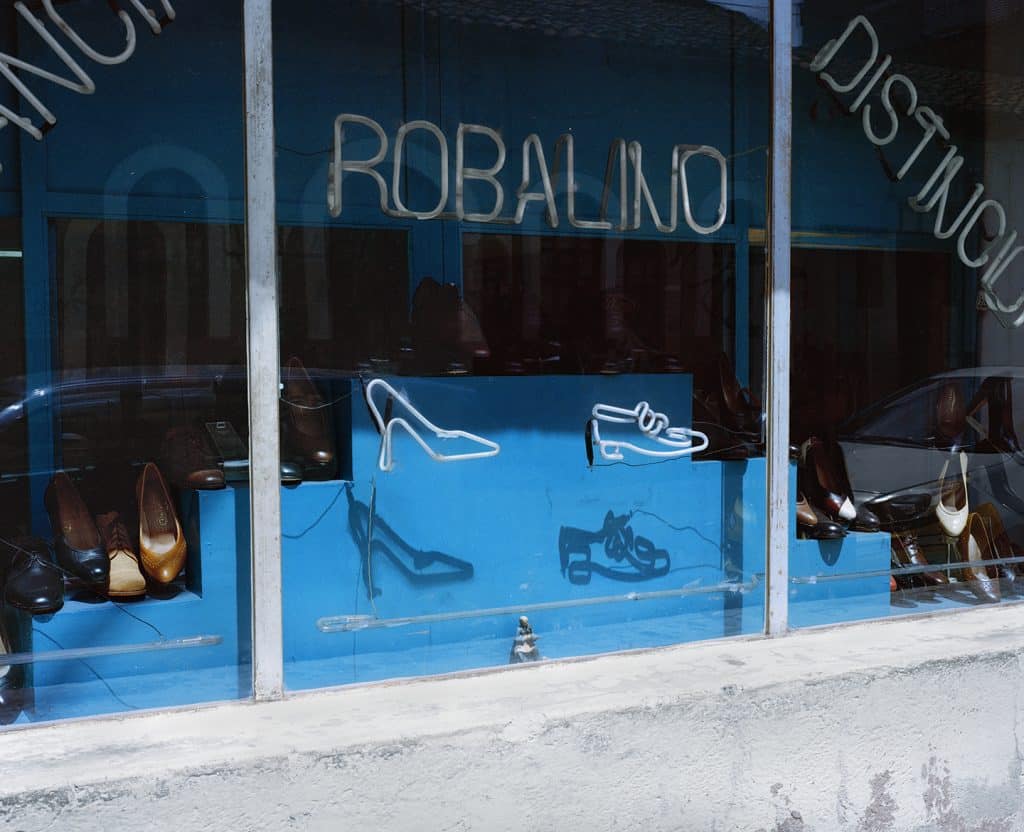
Are your projects planned for printed books from the beginning?
No, I don’t think they are. I always hope that they will end up in a printed format, which makes the work more accessible and extends its life, but also marks its closure in a way. It also forces you to put an end to a series, and consider it ready, or at least finished, for an audience, and then it’s all about coming out with the best overall concept and design for the editorial project (taking every factor into account), so it’s a beautiful challenge.
I think about my projects quite abstractly, I can honestly say that they are constantly morphing while I’m working on them. I like to envision them as exhibitions, as books, as digital files, or single images. Every project goes through a long and laborious process, where things (at least for me) are always open to change until they have to finally settle. I also have a lot of trust in the process of collaboration and like to leave some decisions to other people, whom I trust and admire, and whom I know are working together with me.
You have mentioned that this project is about identity and resistance. Can you tell us more about that?
Local trade and local manufacturing, traditions of craftsmanship are almost completely gone in Latin America. City markets are flooded with overseas industrial low-priced production, or by major chain manufacturing and international brands, which using a very aggressive price strategy have pushed local manufacturers off the grid. Resistance and identity are the only two strongholds when it comes to survivability because, in terms of economic viability, the prospect is not too bright.
Do you consider your work to be political?
Yes, I think so. Most of my projects in a way address issues of power, economic and social dynamics, and how these forces come into play to distort or question the notions of identity and the well-being (or state) of societies and environments.
What can you learn about a place by looking at its streets?
I would say you can learn a lot about a place by walking its streets, by paying attention to its architecture, its urban construct, its decay, by listening to the people, the sounds, the music, by talking to them and watching people interact amongst themselves. This is one of the things that I enjoy the most and value most about photographing: the process… and the grind.
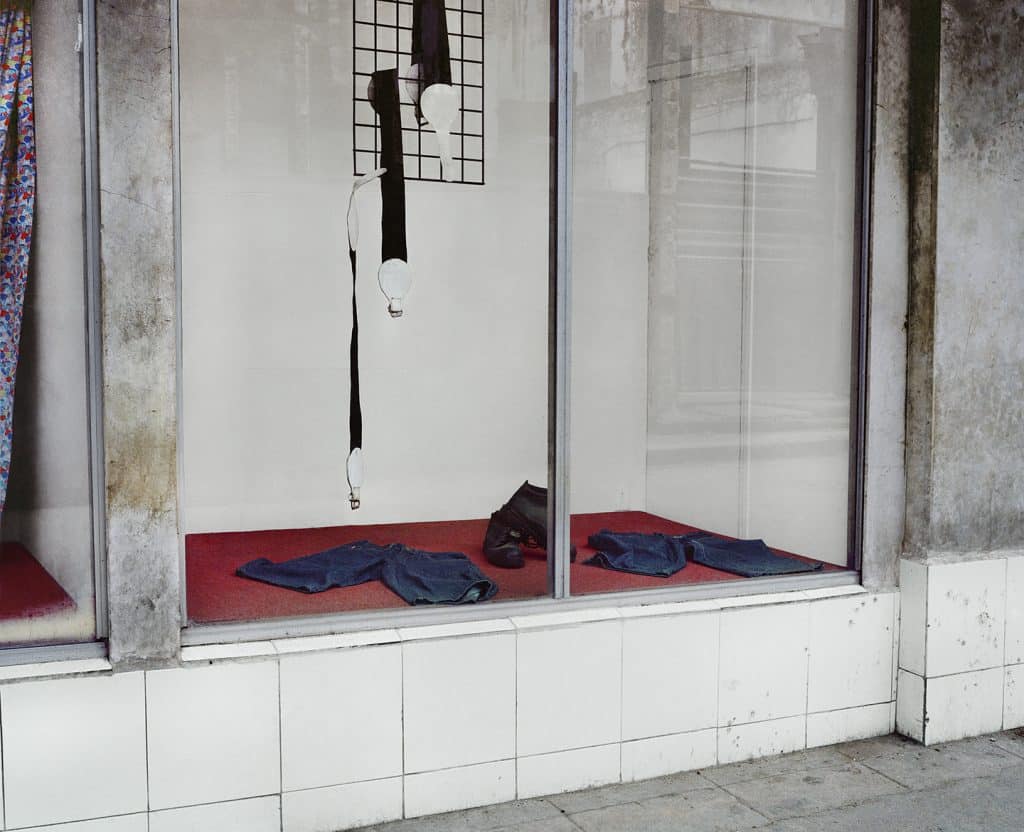
Would you describe your work as street photography? Would you place it within Mexican or Latin American street photography traditions?
I’m not sure I would describe my work within the street photography framework, even though there are some elements that could coexist with the tradition. However, I do believe that my work is somehow rooted in a Latin American tradition, but precisely intends to move away from it, and propose an alternative approach or point of view to the Latin American photographic narrative. Ultimately, with my work I strive to change the viewer’s perception of what appears to be quotidian and commonplace, to counter the biased views of Latin America or the stereotypes that have dominated most of the region’s depiction in photographic history.
Tell us about some of your past projects and how Baja Moda relates to them.
In the last decade, I’ve been mostly concentrated on exploring issues of identity in Latin America, as well as the powerful relationship between the ancient cultures and the contemporary city. Both of these ideas are commonly interrelated in urban manifestations, decorative motifs or popular architecture. Baja Moda is a project about Latin America, and that could only be about Latin America. There are a lot of visual clues in these storefronts and their surrounding context, that manifest human expressions and visual intentions, which are themselves strictly bound to an unavoidable, many times inescapable, social and economic reality.
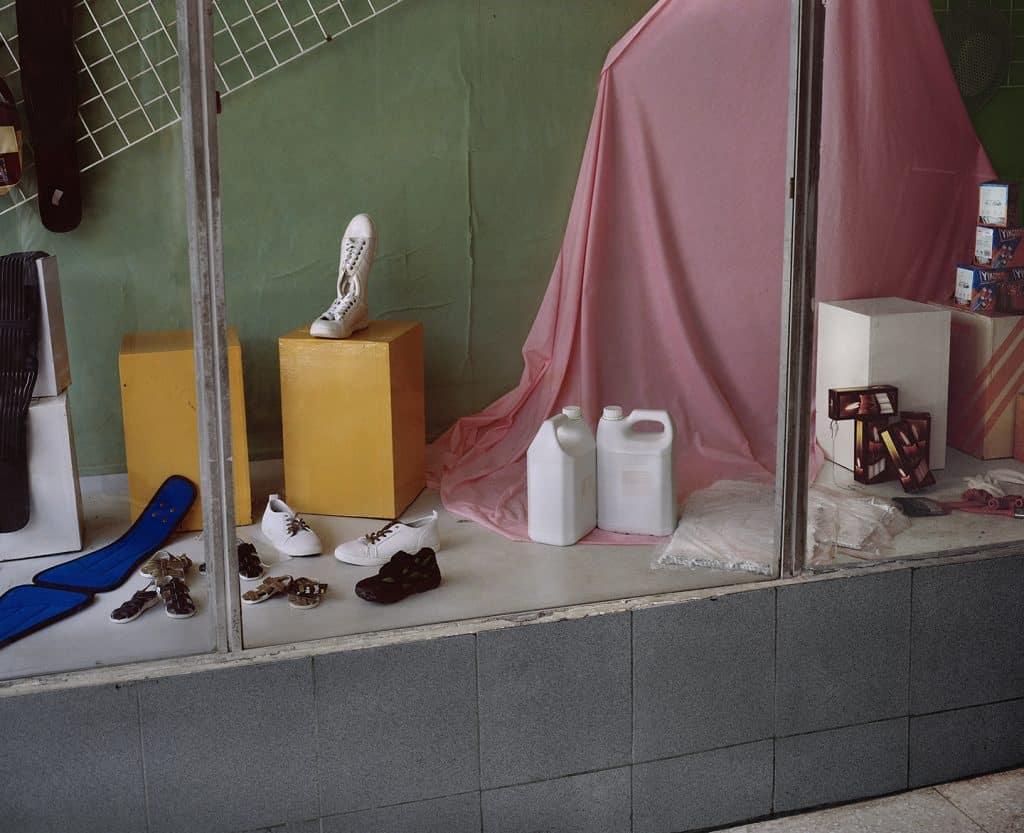
What leads you to make photographs in a strict aesthetic style? Do you think your work contrasts with current styles of massive image production?
My aesthetic style, if I allow myself to declare a personal “style”, corresponds to my visual and narrative interests and necessities, which are constantly pulling away and into each other. It’s important to choose, to select, and to take a visual stance. There are a lot of decisions that have to be made with a single photograph, and with every project or group of pictures, and every one of these decisions has an impact on how the work will be read and understood, so that’s why it’s so important and so difficult to find the right distance, the right format, the right size, etc. Everything in an image speaks out and has a particular weight to it, so it’s very important to choose and to let go.
Are you striving for a personal style? Do you think photography can convey a democratic point of view?
I’m not completely sold on the idea of a “style”, but I would be happy for people to recognize my work and understand it from a visual and narrative perspective. I’m not sure what to think about photography and democracy put together in one sentence. I’m also not sure if they should belong together anyway.
In several projects I have chosen a serial approach, sometimes bordering on typologic, but it is not a rigid strategy, I intend it to respond to the specific work or a specific idea. If you compare my two latest published works, Baja Moda and Piedra Volcanica, the visual approaches share some similarities, but they are very different in their core.
Speaking about the impact of social media on photographic culture, do you think that analog photography and steady work on developing a practice could relate to resistance to contemporary life?
It’s a personal choice, and I’m very happy to be able to do what I enjoy every day. However, I’m not sure I consider myself a dissident of contemporary culture and social media, which is also practically inescapable, so it’s better to choose how to apply that distance and live together with it.
Where does your love of photography come from? What motivates your photographic practice?
My love for photography comes from a very early age; since I can remember actually. My father owns an art gallery in Mexico City, so I’ve always had an intimate relationship with art and artists, which is also one of the things I cherish and am most grateful for. Also, my father had a very close friend, Emil Barjak who unfortunately passed away at a very early age, who was a true explorer, fisherman, sailor, and photographer. He would come back from his travels with cases of photo slides, and he would narrate while projecting them on a screen. This was an absolutely enchanting experience, as you can imagine. Later, I would come to discover Graciela Iturbide’s work. My father has worked with her on several occasions, which has been a major inspiration, both the work and Graciela herself, whom I’m proud to call a friend.
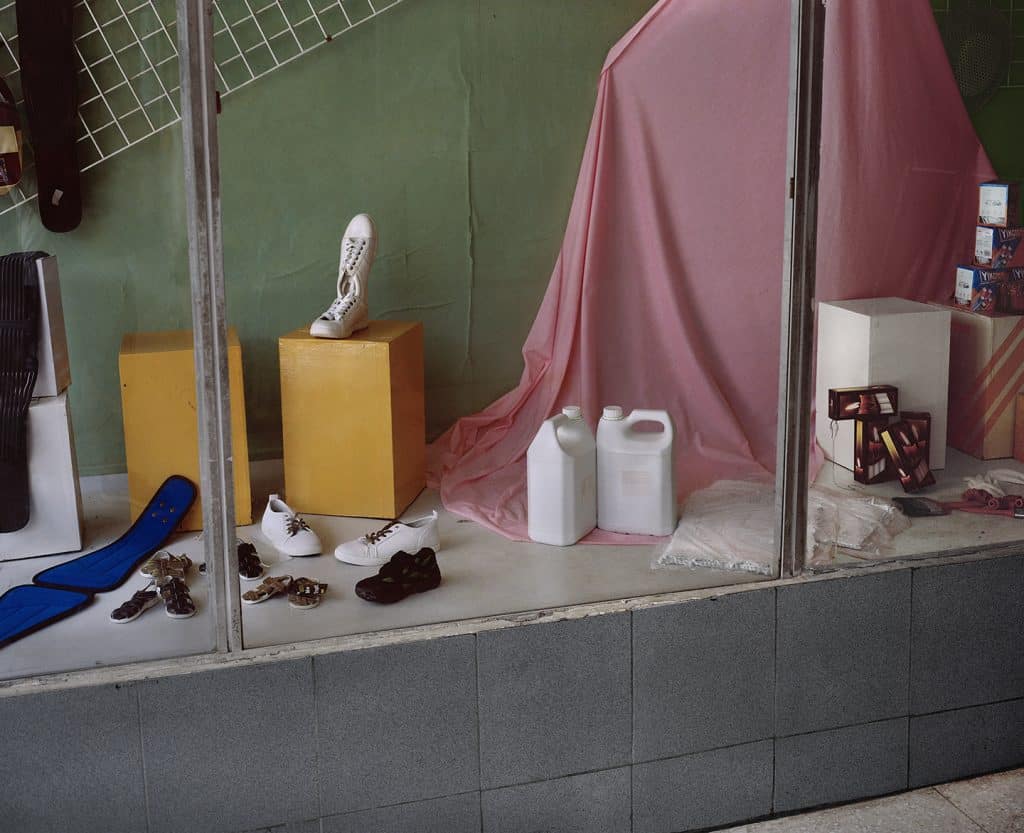
What has photography taught you about the world?
That’s a difficult question. I’ll say that traveling has taught me a lot, it has taught me to be more understanding of other people and other people’s cultures. I believe that there is no such thing as a center, and we would all be better off if we embraced this. I’ll definitely say that photography has taught me a lot about myself.
Is it difficult to find new ways of seeing?
It’s difficult to find new things to look at, things worth photographing and sharing.
Pablo López Luz, Baja Moda is published by Editorial RM, 98 pp, €45.00.

